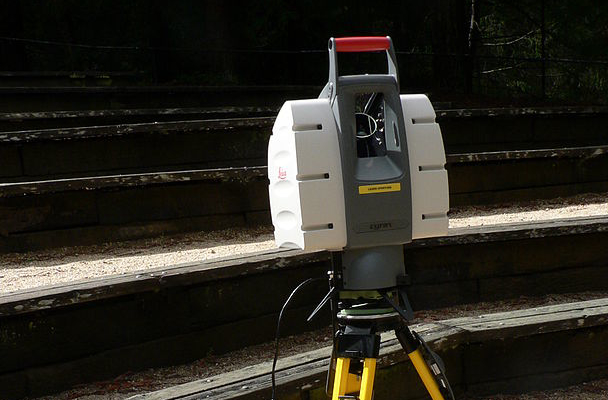I still remember the very first scan that I performed. It was after I completed my week of training with Ron Aarts at Leica’s HQ in San Ramon and I was smart enough to make sure it was not for a client. I had about four hours to kill, so I thought I would scan an electrical substation that was behind our office in Dallas. About two hours in, I had captured one scan world of the six I would need to complete the substation. It seemed like every decision caused a ripple effect of changes that I did not anticipate at the time. Move the scanner a little this way for a better angle… Now I can’t see that target! I need to move the laptop due to the sun… The CAT5 cable isn’t long enough! Just one more scan before dark… Oh! The batteries are dead.
With practice, of course, my skills improved, and I had always considered that to be the hallmark of a good field operator. Skill to do comes from doing, and the more I stayed in the field, the better I became. Profitability, on the other hand, comes from not just being good at your job, but from being able to perform a service better and at lower cost than the market accepted standard. Being faster than most has helped me be profitable.
Then I was called in to assist with a project at a food-manufacturing site last week and I got a reality check. While I may be well versed in operating a scanner, each new project I undertake represents another “first time.”
The scope on this required that a certain part be scanned three times. Once while the part was in operation, once while it was offline, and once disassembled. The first scan session required 4.5 hours. A couple of days later we performed the second scan session and it only took 3 hours. I should point out that our global control was established the first time and simply had to be re-occupied, which saved some time, but for the most part it was due to knowing where the targets and scan positions needed to be. The third session occurred the following night, and it was completed in 90 minutes!
Nothing was substantially different between sessions one and three except for my experience level. By the time we performed the third scan there was no talking, no need to think, just perform the same scans from the same positions using the same target locations.
On the way back to the office it hit me, “You never get to repeat any project to see just how well you could do it. Every time is the first time!” Think about that for a minute. Try applying it to another industry. Look at automobile repair; there are manuals that tell you how long each repair should take and what it should cost. They are very specific, parts are listed and time is estimated in 10-minute increments. Need to replace a water pump on a 2012 Lexus IS F? You’ll need coolant, two hose clamps, a water pump and a water pump gasket. If you know what you’re doing the repair should take 2.5 hours. The mark of a good mechanic is that she can beat the “book” time. She can do this because she has performed the exact same procedure so many times before. You know, practice! It’s a system that works in many other markets but that seems unavailable to all of us in the 3D imaging world.
My question is, “Is it possible to take 3D imaging to this place?” Do we even want to? The first thing that would happen is that prices would fall. While that would open new markets, it would not change the cost of equipment or personnel. However, I think most of us would take a reduction in the overall costs on a project for more billable hours a month. Perhaps there will be a day when will be able to simulate scanning to get the answers that only experience gives us today but for now I fear that we will all continue to scan like it is the first time, every time.






